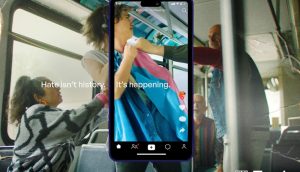For GroupM CEO Peter Tortorici, branded entertainment is the new best way of reaching viewers, on TV and online.
Speaking to attendees at the NextMedia conference in Toronto, he said that rather than producing TV commercials that more and more people are skipping over or online ads few people watch, the key to engaging viewers is to create content with brands that people want to see.
The trick to doing it well, according to Tortorici, is to keep the brand integration from becoming annoying.
‘How many relationships are sustainable when one party only talks about itself?’ He asked.
The content needs to fulfill mutual needs. Using the US example of In the Motherhood, an online show starring celebrity moms acting out embarrassing stories involving their children, Spring and Sauve had a chance to reach out to mothers and entertain them while creating a community in which the moms could share their own stories.
For that demographic, it was the perfect place for engagement and entertainment, Tortorici said.
‘The place where moms connect is online,’ he said. ‘Online has become the backyard fence moms used to hang their laundry over and talk to their neighbours.’
Creating content from the ground up isn’t the perfect situation for a lot of advertisers, added Tortorici. Another way to create branded entertainment is to invest in production of shows and use them as platforms for clients. GroupM has done so with Battle of the Blades, Steven and Chris and All for One with Debbie Travis.
In another session, Bryan Segal, VP, ComScore, said TV use is, as a percentage of media engagement, shrinking in Canada, but that does not mean TV is dying.
‘Will video eat TV? Probably not. You want to watch different things online than you do on TV,’ Segal said. ‘These two media work together really amazingly. We see video as a complement rather a replacement.’
That being said, video does continue to grow quickly, Segal pointed out. According to ComScore numbers, 18- to 24-years-olds in Canada are watching 1,100 minutes of video, or 244 videos, per month, and 25- to 34-year-olds are only slightly behind, at 1,025 minutes, or 222 videos.
‘It’s not just for young people or people who want to watch cats surf,’ he said. ‘Video has become a cultural phenomenon and it’s not going away.’























